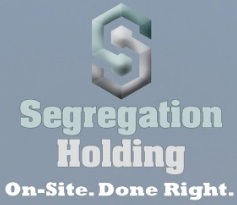The IRS seemingly chalked up a victory against cost segregation in the AmeriSouth XXXII, Ltd. case, but if one carefully reads T.C. Memo. 2012-67 a different conclusion might be reached.
The truth is, what this case is really about is a  property owner who walked away from the battle…no; actually, it was a surrender by absentee ballot. The client, Ruel Hamilton, simply sold the apartment complex in the middle of an IRS audit. Yep, he just walked away as if doing so absolves him of any adverse ruling. Since the owning entity is a limited liability company (LLC) many, if not 99%, would argue he is insulated from any fallout. Perhaps, but that issue isn’t being addressed here.
property owner who walked away from the battle…no; actually, it was a surrender by absentee ballot. The client, Ruel Hamilton, simply sold the apartment complex in the middle of an IRS audit. Yep, he just walked away as if doing so absolves him of any adverse ruling. Since the owning entity is a limited liability company (LLC) many, if not 99%, would argue he is insulated from any fallout. Perhaps, but that issue isn’t being addressed here.
Here’s some background.
AmeriSouth is a limited partnership that bought an apartment complex in 2003 for $10,250,000. AmeriSouth engaged a cost segregation study and the cost segregation firm attempted to depreciate more than 1,000 building components over 5- and 15-years. The normal period is 27.5 years applicable to residential rental real estate under MACRS. Using this cost segregation method, AmeriSouth deducted $3,029,029 for depreciation in years 2003–2005. The IRS audited the partnership under TEFRA and disagreed with AmeriSouth’s treatment of the components. IRS denied $1,079,751 in deductions for those years. The case ended up in Tax Court where the IRS also argued that AmeriSouth was attempting to depreciate some assets it didn’t even own. This would be considered, at a minimum, gross negligence bordering on criminal intent.
Right now, the cost segregation community ranges from abject panic to calm reserve over the ruling. For many in supporting roles, such as CPAs and tax attorneys, the ruling was a complete surprise…even to many taxpayers who have used cost segregation. Of course, those closely aligned to the industry and members of the American Society of Cost Segregation Professionals, ASCSP, were not surprised at all. We have been monitoring this activity for a year.
When viewed through the prism of defeat, cost segregation would seem to have been dealt a serious blow as to credibility and voracity. The problem with that assessment lies in the fact the Petitioner didn’t do what he, as the Plaintiff, is supposed to do and that is aggressively “petition” or “convince” the court with their case! Since Mr. Hamilton was “absent from class” the court ended up ruling in favor of the IRS without so much as an “I object.” Due to their client’s non-response to countless communication efforts Mr. Hamilton’s lawyers withdrew from the case, with the court’s permission, and left the taxpayer representing himself. At this point, with no taxpayer advocate or representation, the court deemed any factual matters not otherwise contested to be conceded. By fiat this case was decided…”cost segregation” ended up being the “fall guy” when in reality Mr. Hamilton simply was a no-show.
No court is going to rule for the Plaintiff when they have disappeared. Many areas the court ruled in favor of the defendant, the IRS, could have been justified with proper documentation and supporting evidence as to the use and function of the asset. By example, consider the stove hood venting. The court disallowed the venting because “it can also serve to remove odors and heat from beyond the stovetop.” Well duh!? But that isn’t the designed function; removal of odors and heat is simply incidental to the primary purpose which is servicing the stove. Additionally, venting for the dryers were allowed by the court. By design, any ventilation system moves air. Since we do not live in a vacuum any air pulled from the dryer comes from the room it’s in. Venting allowed for drying, venting disallowed for cooking…go figure.
Another great example is the Wiring. Due to the “absence of evidence” the court disallowed all wiring in support of appliances, which are short-life assets. When a building component that is normally considered “real” property is designed and installed for the “purpose” of supporting short-life components, it is generally accepted as qualifying for reclassification by cost segregation to tangible personal property, a 5-year asset.
Cabinetry…a perennial component, virtually always qualifying for tangible personal property status, was disallowed. The general contractor who testified was unable to explain to the court, with any confidence, the steps involved to remove these items. <As an aside here, what GC can’t explain the process of removing cabinetry?> Had he known of the Whiteco Case with it’s six factors, answers to the court would have been more than sufficient to justify the reallocation to 5-year tangible personal property using cost segregation.
One huge factor in applying cost segregation in any situation is proper documentation with supportive case law and rulings where applicable. When any building component is changed from one classification to another by cost segregation, it is not sufficient to assume the IRS will accept by fiat…quite the contrary. The Infernal Revenue Service (sic) was dragged, kicking and screaming, to accept reclassification by cost segregation due to the court ruling involving Hospital Corporation of America.
Hospital Corporation of America [HCA] v. Commissioner, 109 TC 21 (1997), is the seminal cost segregation case. In it the Tax Court permitted HCA to use cost segregation with respect to a multitude of improvements. Critical to the Tax Court’s analysis was that in formulating accelerated depreciation methods, Congress intended to distinguish between components that constitute Internal Revenue Code § 1250 class property (real property) and property items that constitute § 1245 class property (tangible personal property). This distinction opened the doors to cost segregation. Cost segregation has been used on an increasing basis ever since because cost segregation delivers verifiable results.
Pursuant to this end, an IRS chief counsel advisory (CCA) warned taxpayers that an “accurate cost segregation study may not be based on non-contemporaneous records, reconstructed data or taxpayers’ estimates or assumptions that have no supporting records” (CCA 199921045). In Action on Decision (AOD) Number CC-1999-008, the IRS acquiesced to the application of ITC principles in the HCA case. However, the IRS did not acquiesce to the particular results in this case, that is, the Service did not agree with the classification of specific assets as qualifying § 1245 property.
Ultimately, this case will be used by the IRS and tax courts to bludgeon cost segregation. However, this is not new. The real issue here isn’t “is cost segregation dead on the vine?” It is “will cost segregation firms use the proper documentation and supporting evidence to withstand IRS scrutiny?” When a cost segregation study is performed prudently, it delivers positive results for the owner every time it’s applied. Commercial real estate owners and residential rental real estate owners, do not fear. Cost segregation is alive and well…and you can take that to the bank.
www.SegregationHolding.com
Email [email protected]
Follow on Twitter @SHLCostSeg


